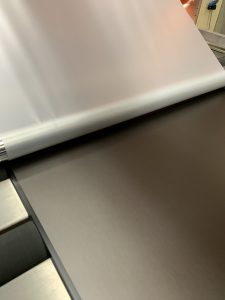Most people will be familiar with protective film today because of things like electronics and packaging. There are many other applications though. The films can protect against dirt, grease, UV, scratches, moisture, and more. We want to have a closer look at them here. Then, if you want to arrange laminating services for different needs, you can rely on us.
What are they?
 Protective films are typically plastic, although you can technically get other materials too. Plastics are effective because they are lightweight, flexible, and cost effective. They can also be clear and transparent, allowing people to see the product beneath.
Protective films are typically plastic, although you can technically get other materials too. Plastics are effective because they are lightweight, flexible, and cost effective. They can also be clear and transparent, allowing people to see the product beneath.
Interestingly, there are two broad types of protective film. The first are what you would expect; simple thin films you can use to ensure protection against contaminants and wear. The second option is specifically for painted surfaces. Here the plastic needs to provide additional features such as chemical resistance and UV protection. This preserves the paint for longer, reducing the risk of things like fading or cracking.
What to choose?
There are a couple of important factors to think about when you need to decide on a protective film. Let’s have a look at them.
Firstly, think about the material. If you want plastic, you have several different options including LDPE, PO, PE, PVC, and co-extruded films. Think about the characteristics you need here. For example, PVC is flexible and has impressive chemical resistance. PP has good tear resistance and clarity. Make sure you consider the impact on the laminating services too; the application method can differ by material.
Secondly, think about the thickness. Some films are incredibly thin because they don’t need much durability and must retain flexibility. Others are thicker and more rigid to increase impact resistance and other factors. Make sure you think carefully because thicker films tend to be more costly.
Thirdly, think about the actual specifications. Do you need a film to provide temporary protection while goods are being shipped? Or do you need ongoing protection for architectural products, automotive parts, and other goods? If it is the latter, you need to think more carefully about the appearance. If the film is temporary, make sure you choose one that is easy to remove.
Next, look ahead and plan for the future. If the film will only be in place for a short time, what will the end user do with it afterwards? Is it recyclable? This is an important factor for many stakeholders today.
Finally, look at the specific application and any requirements within the industry. For example, films for architectural products need to ensure they offer key things like fire safety. If it is medical applications, they must be hygienic and safe for humans.
Talk to us about laminating services
We have a huge amount of experience with protective films. In fact, alongside foils, they are our main area of expertise. We work with clients from numerous industries, helping them to choose high quality solutions for a growing list of applications.
The best thing here is you can talk to us about different requirements. We’ll then choose a suitable film for you. It will ensure your products get the level of protection they need. So, get in touch today and learn more about our laminating services.
